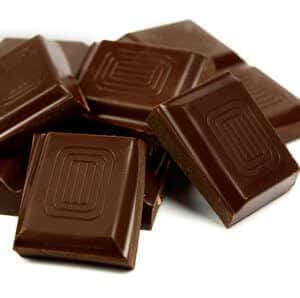
Europe has just made it official: There is enough scientific evidence that chocolate can be considered a healthy food. The European Food Safety Authority, the EU’s equivalent of the FDA for food, has determined that the flavanol compounds found in dark chocolate are beneficial for circulation. They keep blood platelets from sticking together to form clots, and they help to control blood pressure as well as maintain blood flow.
The agency’s decision may result in health claims being made on chocolate products, from beverages to candy bars. The request was put forward by Swiss chocolate maker Barry Callebaut, which has funded research on the physiological effects of cocoa flavanols. The manufacturer has developed a special process that protects flavanol compounds so that at least 80 percent of them remain in the finished chocolate.
A recent review of research on cocoa flavanols concluded that the positive effects of these compounds on the lining of blood vessels are likely to reduce cardiovascular risk (Archives of Biochemistry and Biophysics, online March 7, 2012). German researchers agree. British scientists found in an experiment that dark chocolate containing cocoa flavanols can boost cognitive and visual function (Physiology & Behavior, June 1, 2011). A review by Harvard investigators found that cocoa flavanols probably help to protect against heart disease (Nutrition & Metabolism, Jan. 2006). This is just a tiny sampling of the research that has been published in the last few years alone. Some but not all of the experiments were supported by chocolate manufacturers.
In the past, some nutrition experts have decried enthusiasm about chocolate’s circulatory benefits. They warn that the calories in chocolate candy will undo any good that cocoa compounds might impart. The research supported by Callebaut demonstrates, however, that it doesn’t take very much chocolate to do some good. About 200 mg of cocoa flavanols daily can keep the circulatory system humming. That comes out to about 10 grams (roughly one-third ounce) of high-quality, high-flavanol dark chocolate. That much chocolate will set the gourmet back by around 50 calories.
If that is still too much, or if Callebaut chocolate is not readily available in your local store, consider CocoaVia. The Mars Botanical company, like Callebaut, has invested in research to determine how cocoa flavanols affect blood vessels as well as technology to preserve these compounds during processing. The company’s CocoaVia products include beverage powders providing 250 mg of cocoa flavanols per 30-calorie serving.

